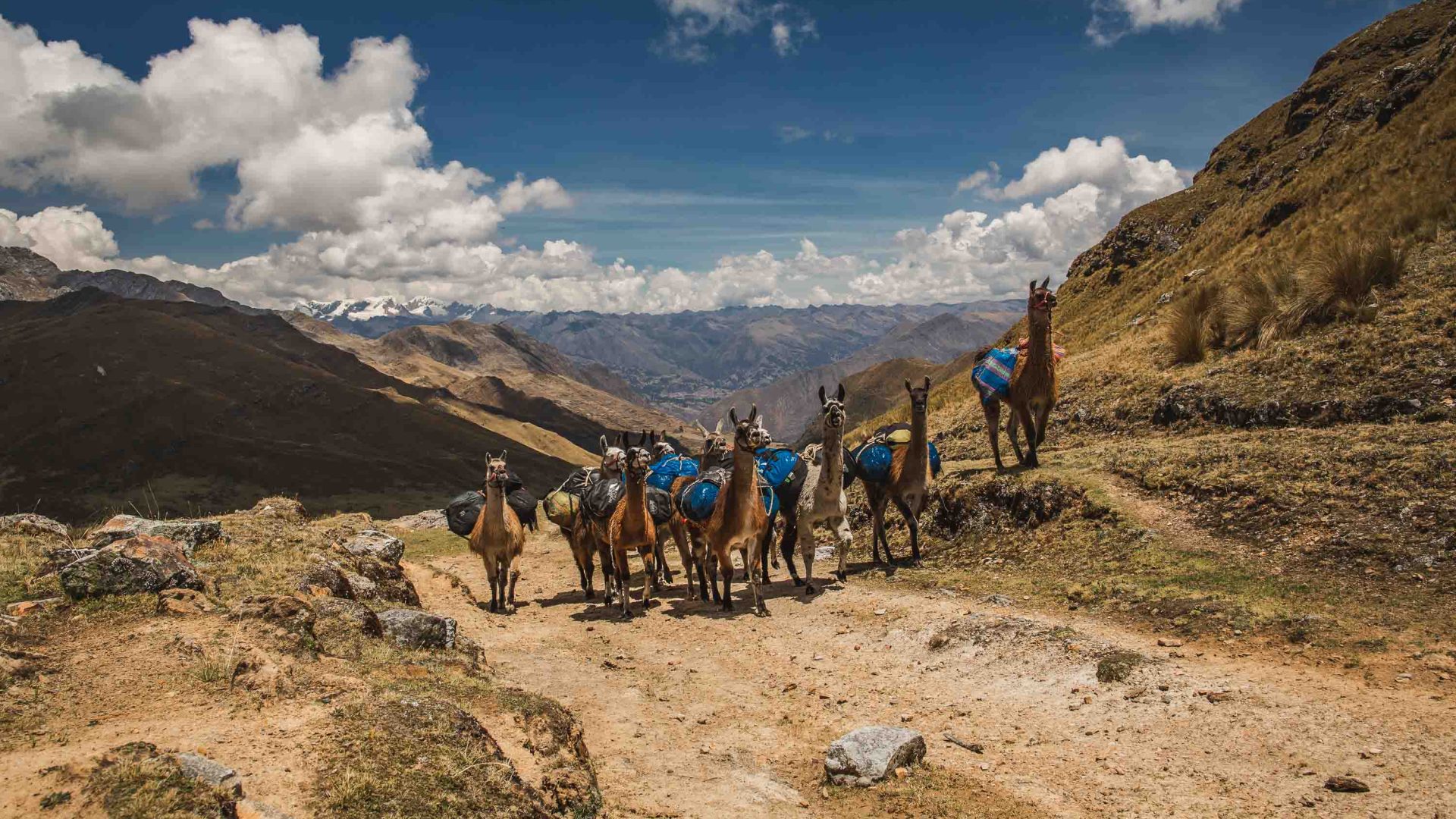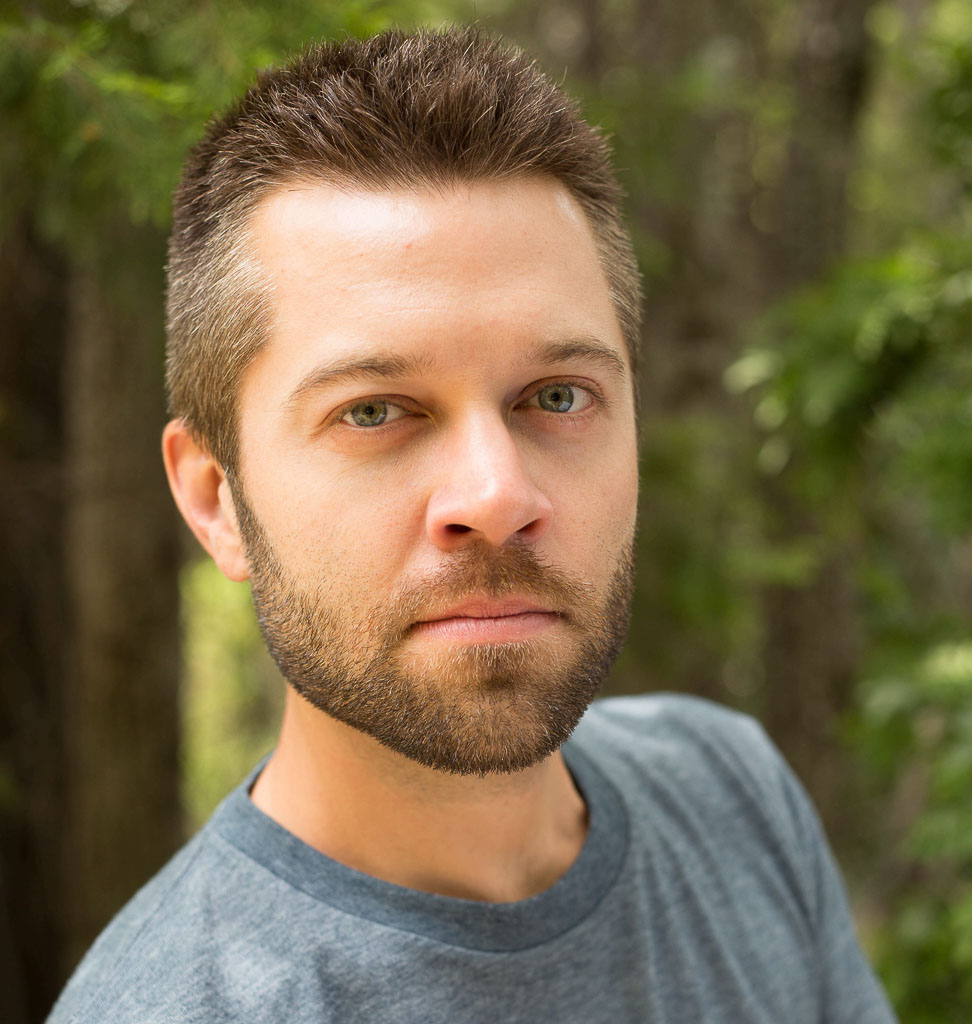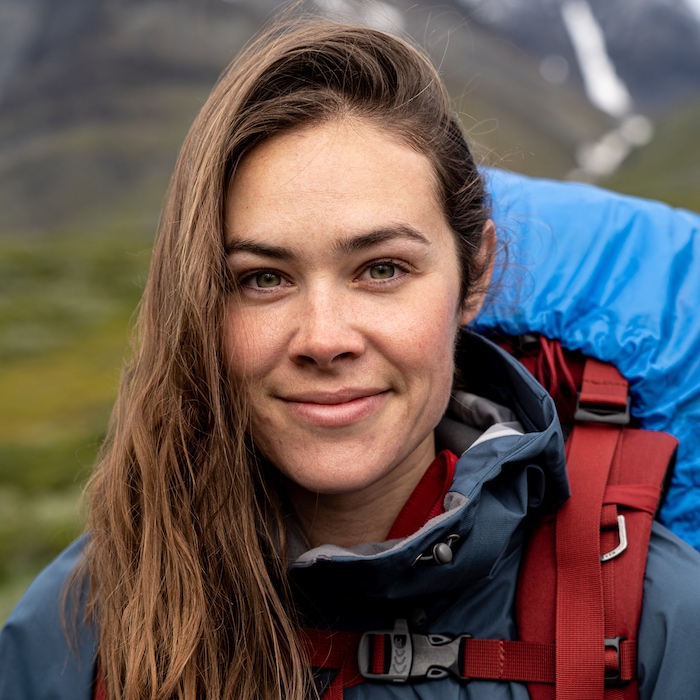
Writer Emily Barlow follows a less-trodden path in the Peruvian Andes to find ancient archaeological sites, remote mountain campsites, and some of the best-preserved Inca roads in the world. Could this be the next step for tourism in Peru?


Writer Emily Barlow follows a less-trodden path in the Peruvian Andes to find ancient archaeological sites, remote mountain campsites, and some of the best-preserved Inca roads in the world. Could this be the next step for tourism in Peru?
In the Central Andes of Northern Peru, I’m with my hiking group standing around a restored ushnu—an altar for religious ceremony in Incan tradition—observing a ritual offering to the nearby mountains.
Our guide Virgilio Maguiña holds a yellow cloth bag full of coca leaves. Typically consumed in this region by chewing or brewing in tea to help with altitude sickness or other illnesses, Maguiña tells us these leaves were also spiritually important to the Incas and to Andean culture today. They’re considered a divine gift from pachamama (Mother Earth) and a way to communicate with ancestors, the cosmos and nature. “Please take three whole leaves in your hand and make an intention for our trek,” he instructs.
I close my eyes, take in the earthy scent, and set my intention: To be present, grateful and inquisitive on this trip. Oh, and no rain, gracias… I blow breath onto the tokens, then lay them down on the former altar. I’m not religious, but I can tell something special is taking place.
I’m trekking part of the UNESCO World Heritage-listed Qhapaq Ñan—a Quechuan word that translates to ‘Royal Road’—an 18,000-mile (30,000-kilometer) Andean road system that extends across six countries in South America: Argentina, Bolivia, Chile, Colombia, Ecuador and Peru. It’s not just the length that’s impressive: This extraordinary network is considered the backbone of the Incan empire, which ruled from the early 13th century until Spanish colonization in 1572.
Within Peru, the road links countless Inca sites; qolqas (storage houses for grains and textiles), religious places like ceremonial platforms (ushnus) and temples and self-sufficient administrative centers used for trade, community gatherings and accommodation, including the famous citadel Machu Picchu.
But I’m nowhere near Machu Picchu or the famous Inca Trail. I’m on The Northern Great Inca Trail, a five-day trek in the northern Peruvian highlands that follows some of the best preserved sections of the Qhapaq Ñan between archaeological sites Chavin and Huánuco Pampa, one of the largest Inca administrative centers outside of the Cusco region. Few other tourists have visited on a supported trek before.
It’s been developed by local operator Explorandes, alongside tour companies QN Travel and KmCero in collaboration with non-profit institution Patronato Cultural del Perù, to help restore and conserve the trail and facilitate public use. Explorandes is a family business whose founder Alfredo Ferreyros pioneered trekking tourism in the Andes from 1975. Since being the first tour operators on the Inca Trail, they have established adventure travel in remote regions of Peru.
I see clearly how the road once traced fully intact across the land. Maguiña explains, “[The Incas] had detailed control of everything and everywhere in the empire.”
Our trek technically began yesterday at the small mountain village of Castillo in the Ancash region, reached by a winding, bumpy mountain road passing snow-capped peaks and vast rivers. My mind is rich with stories of Peru’s ancient civilizations after visiting a 3,000 year-old archaeological site, Chavìn de Huantar, earlier that day, once occupied by the Chavin, an influential and major pre-Inca culture.
From the first step, I’m transfixed. Perhaps it’s the way the late afternoon sun casts a gold and pink hue over the valley. Or the echo of distant drums and singing from a town in Sunday celebration. Later our tents are pitched among the remains of an ancient Incan tambo, a stone structure once used for administrative or military purposes. Here at Soledad de Tambo, the moon’s glow punctuates the night sky. I don’t need a headlamp to see. The milky way is radiant and impeccably clear above our yellow domes.
I expect to come across a few more trekkers. But we see only locals, stewarding their sprawling, hilly pastures in the presence of pigs, dogs, sheep and llamas. We cross deep valleys, alpine lakes and flowing streams, alive with fragrant wildflowers buzzing with bees and endemic queuña trees. Native grass, ichu, is growing everywhere, alongside potatoes—some 4,000 species of which grow in Peru— even on steep slopes and high precipices.
We pass abandoned settlements and developing towns like Ayash, which sits within a sheer patchworked valley, its crimson red and bright blue buildings a contrast against the lush landscape. All the while, we’re following the wide, stone steps laid down by the Incas and pre-Incan civilizations; up to 49 feet (15 meters) wide in some places, ageing between 600 to over 2,000 years old.
From Ayash we head steeply uphill, following the widest and longest part of the Inca road we’ve seen yet, toward Huamanin Pass. Atop the 14,593-foot-high (4,448 meters) pass, I stop to catch my breath in the thin air and look back across the 18 miles (29 kilometers) we’ve already trekked.
I see clearly how the road once traced fully intact across the land. Maguiña explains, “[The Incas] had detailed control of everything and everywhere in the empire.”
To transform this extreme, diverse terrain at such altitude into a strategic transport corridor is a mark of very specialized engineering. I visualize the road connecting the Inca’s various dominions and their supplies, stored in ridgetop stone warehouses once full of potatoes, fish and corn. We’re told it was all administered via a complex accounting system using knotted cotton strings called kipu.
Not only used to count the intake and distribution of supplies, their colors and knot types all represented various numerical values. It’s also believed kipu stored narrative and phonetic information, but how or why isn’t yet well understood. “It wasn’t just a network, but a whole communication system,” says Maguiña.
Wealth disparity is just one of the problems facing Peru. Tourism is the country’s third biggest industry, but is largely concentrated in a few key areas: Lima, Cusco and the Sacred Valley, Machu Picchu and Lake Titicaca in the south.
I’m in my own world as we hike through this vast grassy sub-alpine plain towards the Huamanin Pass. Until I spot ugly layers of gray cut into the distant cliffs. Antamina, one of the world’s largest copper and zinc mines, is right here in the Ancash region, 14,107 feet (4,300 meters) above sea level.
Previously, this area was fertile land for wheat and barley. “The agriculture was much better before Antamina, everybody was working on the land,” says Maguiña. Many residents sold their land in hope the mine would uplift the local economy, but the reality is one in four Ancash residents still live in monetary poverty.
“It’s both a threat and an opportunity,” Explorandes general manager Martin Romero tells me. The threat is of course the mine’s lasting impact on the environment and its surrounding communities. For example, Ayash receives funding from mining royalties to build community facilities like football fields, but Romero says “often [the public works] end in unplanned growth and threaten the ancestral roadways that are there.”
The locals also rely on glacial meltwater to nourish themselves and their farms, but Antamina has contributed a devastating level of toxic arsenic to the waterways, as reported by The Guardian. Last year, the Peruvian government approved a USD$2 billion expansion of the mine’s operation until 2036, amid protests from Ancash residents over alleged unfulfilled agreements relating to environmental and social protections.
And what of the opportunities? “They know they have a World Heritage site right in their backyard,” Romero tells me, “and it’s in their best interest to become an actor that’s supporting the conservation of the site.” In an effort to spur tourism for long-term growth, Antamina partially funded the terminal expansion at Huaraz’s Anta airport to receive commercial flights from 2024, which we used to get here from Lima.
He says Antamina’s sustainable development program is focused on what happens after the mine. “Hopefully part of that wealth is being used to train people and create new economic activities, so that it’s not all dependent on the mine and they are able to sustain themselves after the mine is closed.”
This wealth disparity is just one of the problems facing Peru. Tourism is the country’s third biggest industry, but is largely concentrated in a few key areas: Lima, Cusco and the Sacred Valley, Machu Picchu and Lake Titicaca in the south. Machu Picchu alone brings in around USD$40 million annually, and has generated 36,000 tourism-related jobs.
In 2025, it’s expected to welcome around 1.6 million tourists; that’s 35 percent of the country’s total visitors. But the site’s ever-increasing popularity and demand for high-end infrastructure is putting strain on its already limited capacity, not to mention environmental impacts like soil, stone and vegetation erosion.
Meanwhile, beyond Huascarán National Park and its gateway city Huaraz, the northern central Andes is virtually spared of tourists. The opportunity to bring more visitors to the highlands to follow the Great Inca Trail feels like an urgent one. If Peruvian authorities can diversify tourism away from Machu Picchu to places like this, they could easily (relatively speaking) bring economic value and cultural recognition to Andean communities that need it.
At last, we arrive at Huánuco Pampa, a UNESCO Heritage-listed archaeological site in the central Andes where the Incas governed more than five ethnic groups before it was abandoned by Spanish colonisers. It sprawls more than two square kilometers at an elevation of 11,893 feet (3,625 meters), with evidence of a huge plaza, a central pyramidal administrative ushnu, 497 storehouses, terraces and bathhouses, and residential quarters.
We’re welcomed to the expansive plateau surrounding Huánuco Pampa by the local Aguamiro community with a traditional rukus. In their native Quechua language, it’s a warrior dance that pays homage to the mountains and their ancestry. Four men dressed in garb perform to the rhythmic pulse of a high pitch flute and drum.
“Please tell the world about us and help us bring tourism and economy to our people.”
- Don Pedro, guide
We’re ushered warmly into one of the village buildings for dinner. We’re celebrating with a traditional pachamanca—which translates to ‘earth pot’—feast. We’re each handed a basket of pork, chicken, co rn, potatoes, broad beans and plantains; they’d been cooked in a fire pit dug into the earth, the ingredients layered with Andean herbs and covered in soil for a deeply rich, umami flavor. I dig in with my hands, as is customary, pulling apart the tender meat and eating it with fresh cow cheese and a spicy onion and tomato salsa.
Carmen Loarte is a member of the Aguamiro community and the coordinator from Asociación Cultural Alli Purcheg, a tourism service that facilitates visitors to Huánuco Pampa, including guiding, the welcome reception, spiritual offerings and meals. When I ask Carmen about the opportunities for the community here, she tells me that tourism could certainly generate income, create jobs and improve the inhabitants’ quality of life. It’s also proven that tourism has tangible benefits when it comes to cultural heritage. “Sharing our ancient culture with visitors is crucial for preserving our history,” she says.
When touring the archaeological site with local guide Don Pedro, he describes the way the Incas shaped their rituals around the day and night. We visit a former Sun Temple, constructed so that sunlight would seep through small rectangle windows and reflect against a dominant large gold statue, beaming rays in a spectacular display around the room.
During the Inca Empire, mid-June was the time for Inti Raymi or ‘summer solstice’ where the community gathered for a festival of sacrifice and offering, in honor of Inti (Quechua for ‘sun’), the most venerated deity in Inca religion. The glory of this event is evident at Huánuco Pampa, where the ushnu contains imperial Inca masonry and sacred jaguar and puma sculptures. Don Pedro says sacrificial animal blood would pour from small circular holes in the stone wall for revelers to drink.
Darkness descends and the moon rises like a guiding lantern while we tour the site. “Please tell the world about us and help us bring tourism and economy to our people,” Don Pedro implores in Spanish.
Stars glisten as we exit the final stone archway. I feel a sense of the reverence the Incas paid toward the earth and sky. That not-religious but deeply grateful notion comes back. Let this be a place where more people connect through community-based tourism in the Andes—and maybe feel what I do here.
**
The writer was hosted on this trek by Explorandes and Prom Perù.
****
Adventure.com strives to be a low-emissions travel publication. We are powered by, but editorially independent of, Intrepid Travel, the world’s largest travel B Corp, who help ensure Adventure.com maintains high standards of sustainability in our work and activities. You can visit our sustainability page or read our Contributor Impact Guidelines for more information.

Emily Barlow is a travel and lifestyle journalist from Sydney, Australia and Adventure.com's Head of Partnerships. She's big on backpacking remote mountains and slow expedition-style travel, skiing, lake-hopping, and trying all the local food.








Can't find what you're looking for? Try using these tags: